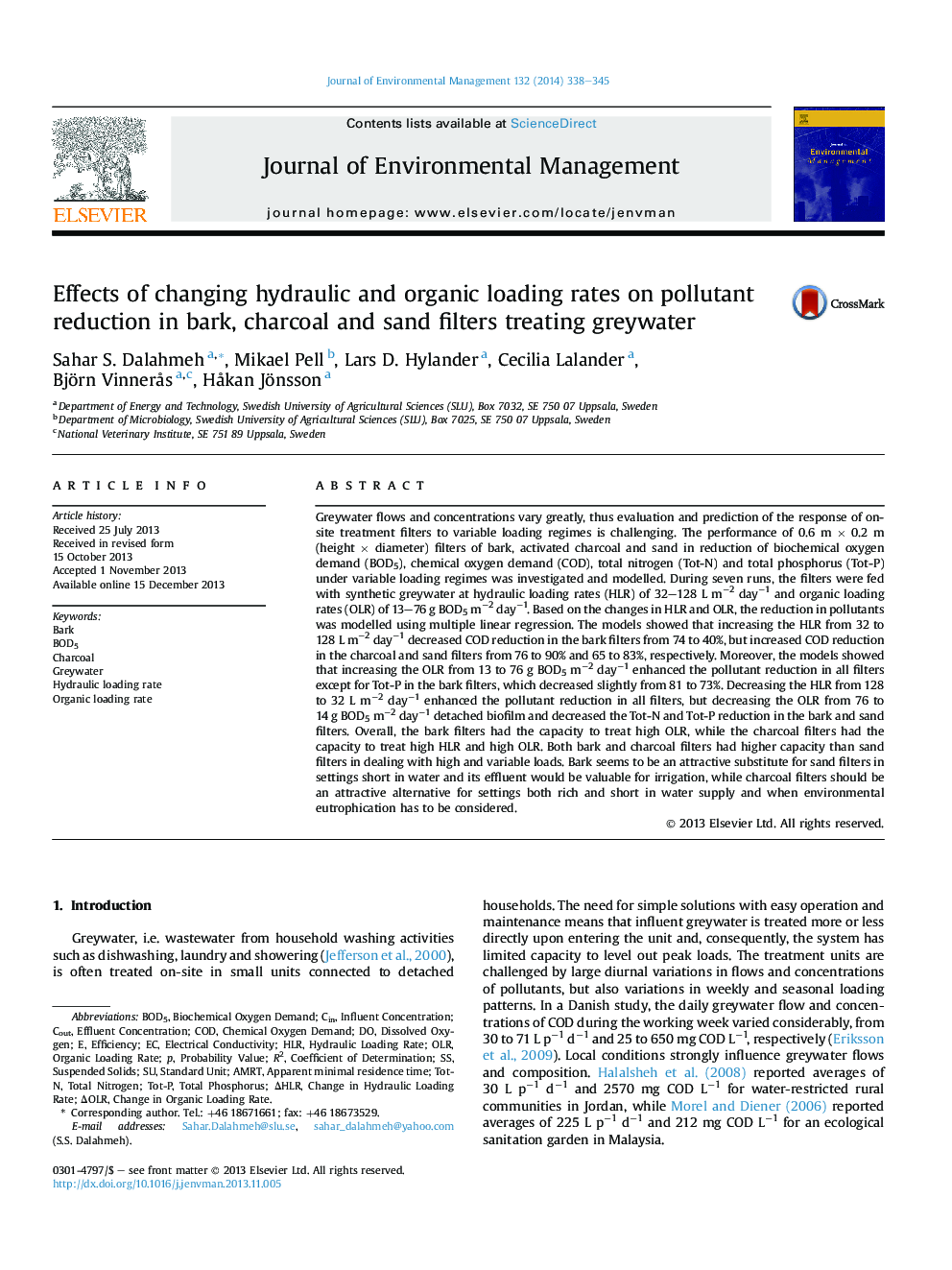| کد مقاله | کد نشریه | سال انتشار | مقاله انگلیسی | نسخه تمام متن |
|---|---|---|---|---|
| 1055811 | 1485280 | 2014 | 8 صفحه PDF | دانلود رایگان |
• Performance of bark, charcoal and sand filters in pollutant reduction was influenced by current and previous hydraulic and organic loading rates.
• Bark & charcoal achieved high BOD5 reduction under changing loading conditions.
• Increasing hydraulic load enhanced organic matter reduction in charcoal and sand.
• Increasing the organic load enhanced removal of organic matter and nitrogen in bark.
• A large decrease in organic load starved the biofilm and released Tot-N and Tot-P.
Greywater flows and concentrations vary greatly, thus evaluation and prediction of the response of on-site treatment filters to variable loading regimes is challenging. The performance of 0.6 m × 0.2 m (height × diameter) filters of bark, activated charcoal and sand in reduction of biochemical oxygen demand (BOD5), chemical oxygen demand (COD), total nitrogen (Tot-N) and total phosphorus (Tot-P) under variable loading regimes was investigated and modelled. During seven runs, the filters were fed with synthetic greywater at hydraulic loading rates (HLR) of 32–128 L m−2 day−1 and organic loading rates (OLR) of 13–76 g BOD5 m−2 day−1. Based on the changes in HLR and OLR, the reduction in pollutants was modelled using multiple linear regression. The models showed that increasing the HLR from 32 to 128 L m−2 day−1 decreased COD reduction in the bark filters from 74 to 40%, but increased COD reduction in the charcoal and sand filters from 76 to 90% and 65 to 83%, respectively. Moreover, the models showed that increasing the OLR from 13 to 76 g BOD5 m−2 day−1 enhanced the pollutant reduction in all filters except for Tot-P in the bark filters, which decreased slightly from 81 to 73%. Decreasing the HLR from 128 to 32 L m−2 day−1 enhanced the pollutant reduction in all filters, but decreasing the OLR from 76 to 14 g BOD5 m−2 day−1 detached biofilm and decreased the Tot-N and Tot-P reduction in the bark and sand filters. Overall, the bark filters had the capacity to treat high OLR, while the charcoal filters had the capacity to treat high HLR and high OLR. Both bark and charcoal filters had higher capacity than sand filters in dealing with high and variable loads. Bark seems to be an attractive substitute for sand filters in settings short in water and its effluent would be valuable for irrigation, while charcoal filters should be an attractive alternative for settings both rich and short in water supply and when environmental eutrophication has to be considered.
Journal: Journal of Environmental Management - Volume 132, January 2014, Pages 338–345
